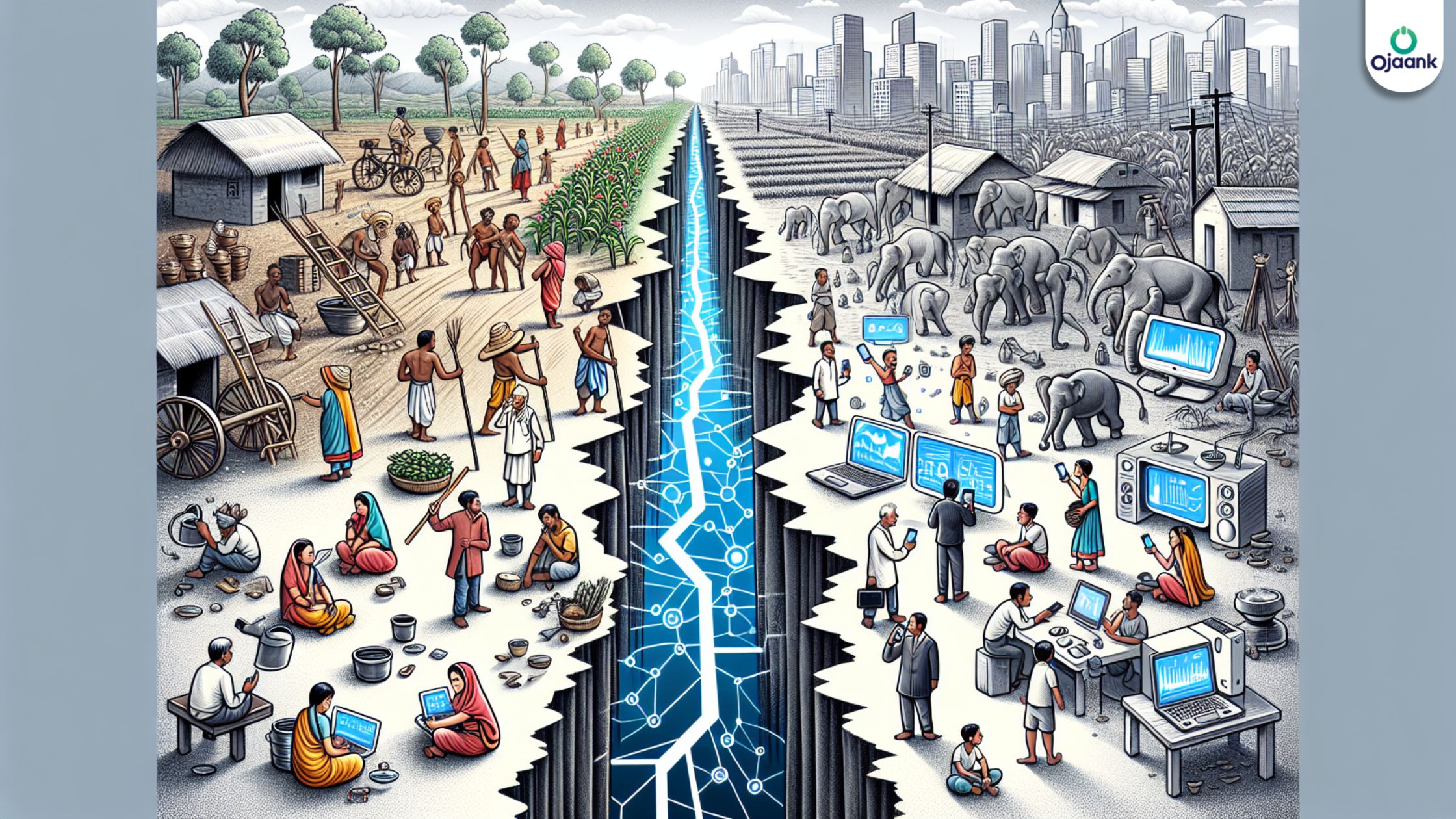Increasing Digital Divide in Indian Economy

Increasing Digital Divide in Indian Economy
Introduction
Understanding the Digital Divide
The term "digital divide" refers to the gap between individuals who have access to modern information and communication technology and those who do not. In India, this divide is increasingly evident between urban and rural populations, as well as between different socioeconomic groups.
Importance of Digital Access
In today's world, digital access is not just a luxury; it is essential for participation in the economy, education, and society at large. For many, lacking such access means missing out on opportunities to improve their quality of life.
Scope of the Article
This article will explore the dimensions of the digital divide within the Indian context, assess its impact on the economy, and discuss potential solutions to bridge this gap.
Technological Access and Infrastructure
Rural vs. Urban Digital Infrastructure
In India, urban areas generally enjoy better connectivity and higher-speed internet than rural areas. This disparity limits opportunities for rural residents, affecting everything from education to business.
Government Initiatives and Policies
The Indian government has launched several initiatives aimed at improving digital infrastructure, such as the Digital India campaign. These policies are designed to increase digital inclusion and transform India into a digitally empowered society.
Challenges in Implementation
Despite good intentions, the implementation of digital infrastructure projects often faces obstacles, including bureaucratic delays, funding shortages, and logistical challenges, particularly in remote areas.
Economic Impacts of the Digital Divide
Impact on Employment
The digital divide has a direct impact on employment prospects. Many job opportunities today require digital skills, which a significant portion of the Indian population lacks, especially in rural areas.
Small Businesses and E-commerce
For small businesses, the lack of digital access means reduced competitiveness in an increasingly online marketplace. This hinders growth and limits the ability to tap into broader markets.
Agriculture and Technology
In the agriculture sector, which employs a large portion of the Indian workforce, limited access to technology can result in lower productivity and hinder the adoption of modern farming techniques.
Social and Educational Factors
Access to Educational Resources
Students in areas with limited digital infrastructure struggle to access educational materials and participate in online learning, a disparity that has been highlighted during the COVID-19 pandemic.
Gender Disparity in Digital Access
In India, fewer women than men have access to digital technologies. This gender digital divide exacerbates existing inequalities and limits women's economic and educational opportunities.
Long-Term Social Consequences
If current trends continue, the digital divide could lead to wider economic and social inequalities, with long-term detrimental effects on India's social fabric and economic stability.
Potential Solutions and Innovations
Public-Private Partnerships
Collaborations between government and the private sector could enhance resource allocation and implementation efficiencies in bridging the digital divide.
Community-Driven Initiatives
Successful community-based projects have shown promise in increasing digital literacy and access, particularly in underserved areas.
Technological Innovations
Emerging technologies, such as affordable mobile devices and new connectivity solutions, hold potential to reduce barriers to digital access.
Future Outlook and Policy Recommendations
Forecasting Trends
The digital divide is likely to persist without significant intervention, with potential deepening disparities between different groups within India.
Policy Changes
Policy adjustments are critical to address both the causes and consequences of the digital divide. More robust efforts are needed to ensure equitable distribution of digital resources.
Role of International Cooperation
International partnerships can provide additional resources and expertise, aiding India in overcoming challenges associated with the digital divide.
Conclusion
Summarizing Key Points
The expanding digital divide poses a significant risk to the Indian economy, potentially stunting growth and exacerbating inequalities.
Call to Action
Addressing this issue requires concerted efforts from all stakeholders, including government, private sector, and civil society, to ensure that no one is left behind in the digital era.
Reflecting on the Future
While the challenges are significant, there is also reason for optimism, provided that innovative and inclusive strategies are adopted to close the digital divide.